The term “lorica” meant body protection in ancient Rome, and “hamata” was the name of the chainmail made of interlocking rings. The lorica hamata was the 1/4-type chainmail armor used by the Roman soldiers between c. 200 BC and c. 400 AD. In this type of mesh armor, 1 ring connects to 4 others, and rivets are used to fasten these rings (hence the root term “hamatus” or “hooked”). A lorica hamata was basically chainmail protection consisting of two main parts: a shirt and a neckline for fastening.
About 35,000–40,000 rings made up the armor and the rings could hardly rust thanks to the constant friction between them.
History of the Lorica Hamata
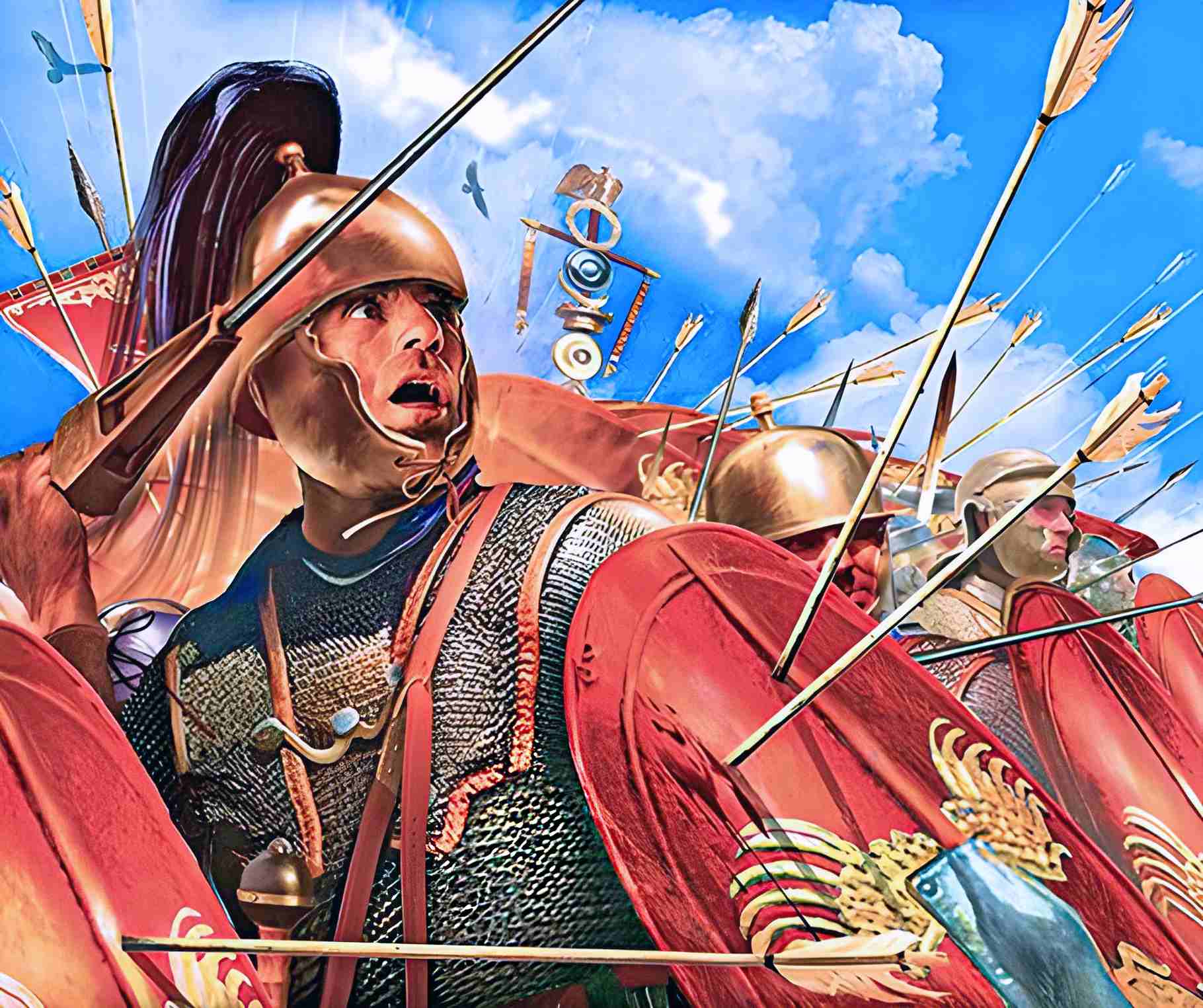
The Gallic Celts invented the lorica hamata before the Romans. The Latin League’s (793–338 BC) armed forces were reorganized after the disastrous conquest of Rome (about 390 BC). During this time, the armor used by the Celtic enemies, ring chainmail, was adopted in place of the traditional bronze cuirasses.
Lorica, quod e loris de corio crudo pectoralia faciebant; postea subcidit gallica e ferro sub id vocabulum, ex anulis ferrea tunica
“Lorica ‘corselet’, which they made chest-protectors from rawhide thongs; later, a Gallic corselet made of iron fell under the same name, an iron shirt made of rings.”
Varro, On the Latin Language (De lingua latina libri) Book V, 24:116.
The ancient Romans used this armor for the first time in the conquest of Hispania which began in 218 BC. As shown by the oldest reliable pictorial testimony, all Roman soldiers were in chainmail in 168 BC without exception. It was reserved for the wealthiest of Roman fighters. They favored this armor for so long due to its superior protection and low upkeep requirements.
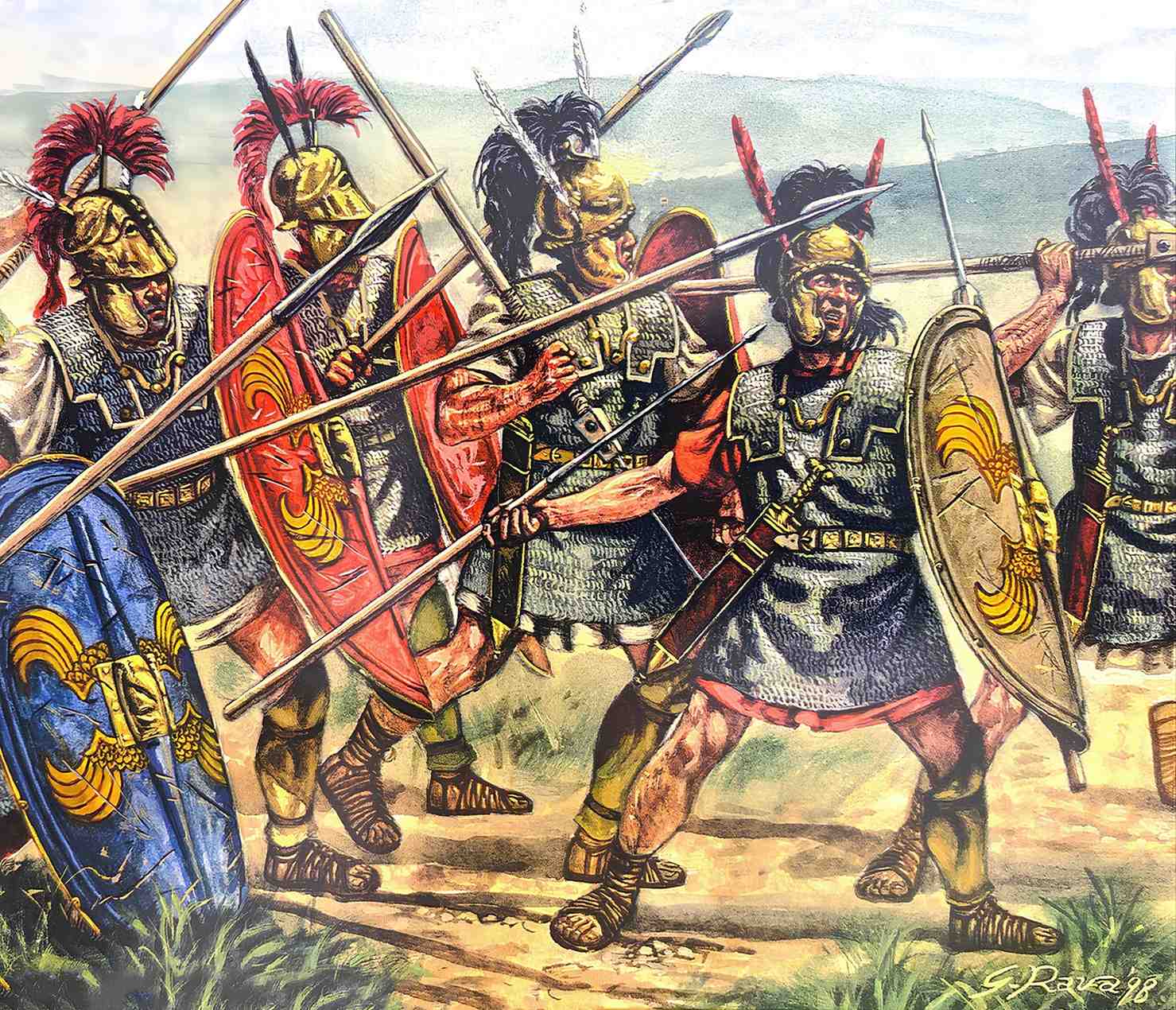
Several variants of this armor existed, each tailored to a certain unit and its missions. Therefore, there could be a variety of scout, cavalry, and spearman variants. In the first few decades of the first century, the lorica hamata was gradually phased out in favor of the lorica segmentata. This is the most easily recognized Roman armor by most people.
Historians, however, disagree on whether or not the lorica segmentata really became as common as was formerly thought and for how long. What is known for sure is that in the latter decades of the Empire, the lorica hamata was once again the standard armor, but it seems that certain legions in Africa and Asia never ceased wearing it.
How Good Was It?

The primary purpose of the lorica hamata was to absorb the impact of strikes and thrusting movements. However, its design made it vulnerable to stabbing motions, which could cause the rings to separate. Since the rings on their own were insufficient to withstand the force of a blow, a subarmalis, made up of multiple layers of linen and/or felt, was worn beneath the armor. It’s likely that these layers were padded, possibly with materials like sheepskin.
Additionally, an extra layer of chainmail was frequently added over the harness, specifically on the shoulder area, to better absorb impacts. Overall, it wasn’t great at absorbing blows from heavy objects or blocking the arrows, but it was durable, adaptable, and would last for decades when not neglected. In later periods of the empire, Germans and Persians also used the lorica hamata. This armor was further used in medieval Europe and Byzantium.
Features of the Lorica Hamata
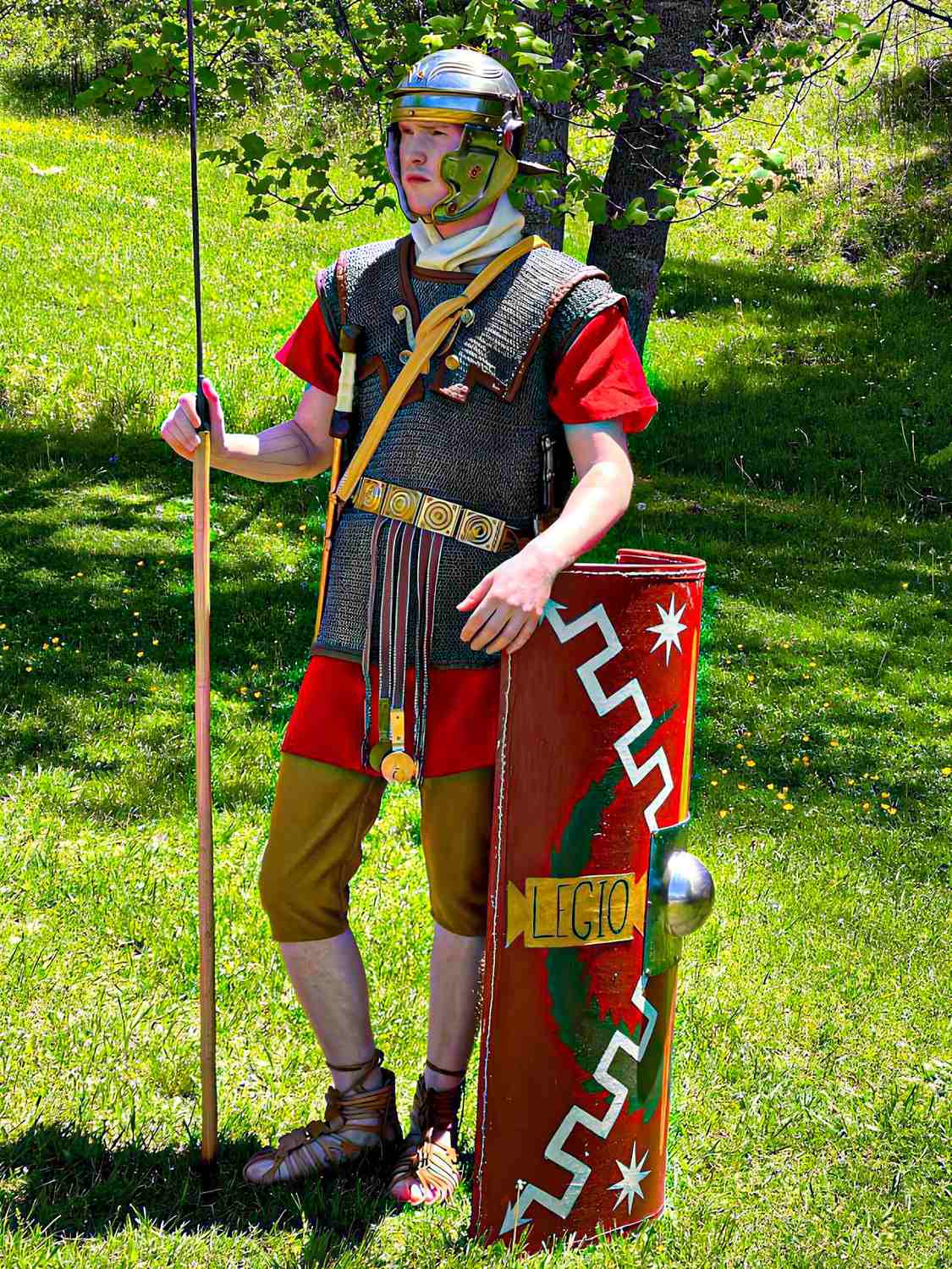
Around 35,000–40,000 rings made up the lorica hamata and the rings could hardly rust due to the constant friction between them. The average lorica hamata weighed anywhere between 20 and 28 lb (9–13 kg). The armor was made of bronze and iron, with rings in a diameter of 0.2–0.3 inches (5–9 mm) and 0.04–0.08 inches (1–2 mm) in thickness.
The Romans modeled the lorica hamata’s fastening system after that of Greek “linen armor,” such as the gambeson and linothorax. This happened around the time when the Romans conquered Greece and the Levant in the 1st century BC.
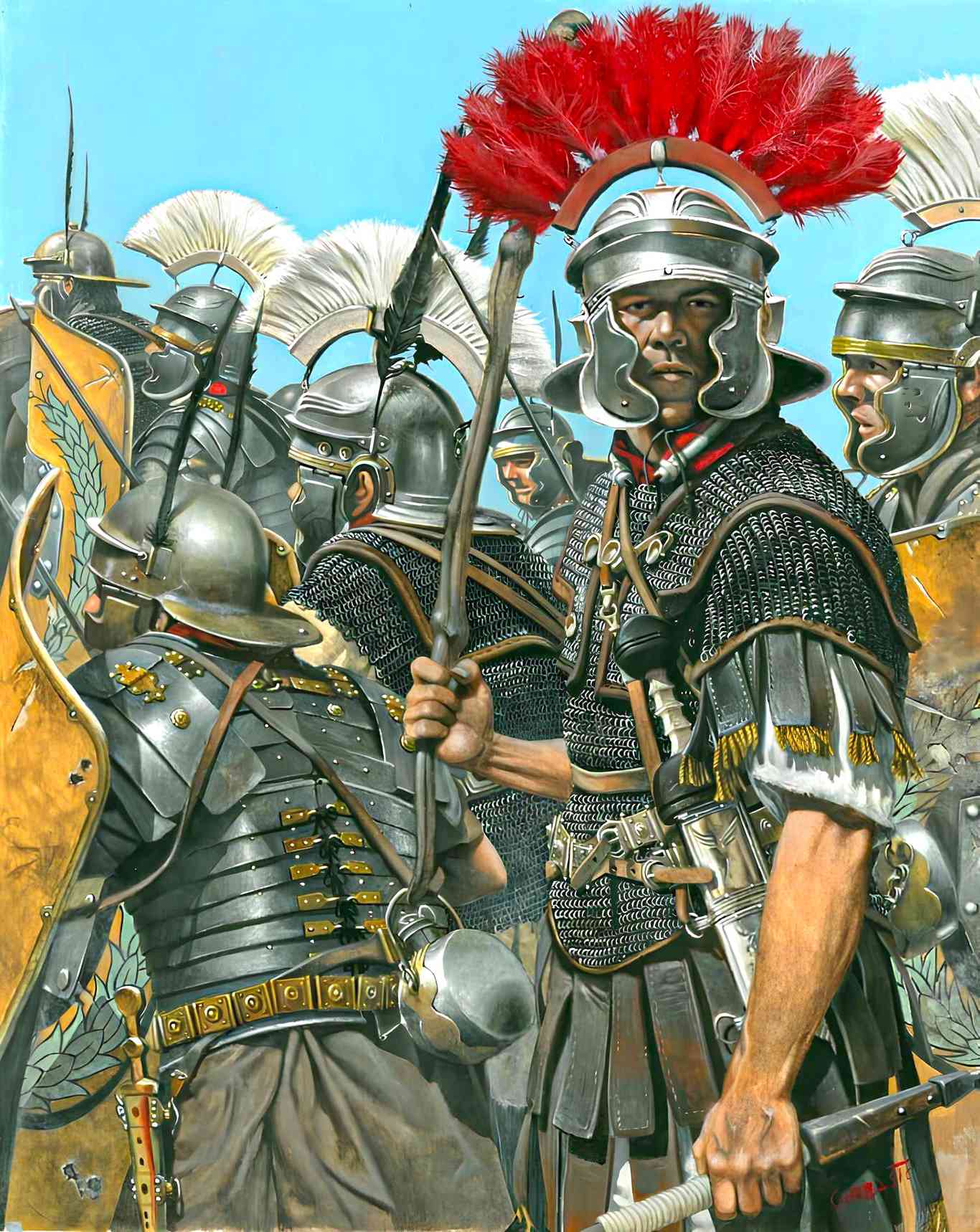
They simply upgraded their lorica hamatas with U-shaped neckline armor that went around the chest, shoulders, and upper back. The uniform side of the U was fastened in the upper back, while its split arms crossed over the shoulders and fastened at their tips on the chest (sometimes with a fibula or brooch).
However, the shoulder pads frequently did not stay in place because the undergarments worn beneath this chain mesh for added comfort were more unstable than the Greeks’ linen. When this armor slid down the arms, the shoulders became exposed. It often continued to slide down the torso in the heat of a battle and blocked the arms at the end.
Thus, extra side clips have been added to the lorica hamata to secure these shoulder pads in place. A piece of cloth or leather was also used to reinforce the neckline. This reinforcement doubled the underside of the neckline and folded over the top by 0.80 or 1.20 inches (2 or 3 cm). A seam held together the fold of the lining, the mail fabric, and the lining itself.
Derivatives

Evidence suggests the existence of derivatives of lorica hamata. Among them, most people are familiar with the lorica plumata. One example of this armor can be seen in the statue of a Roman Gaul soldier with a large oval parma shield and Celtic torc necklace.
The Gallo-Roman statue of an ancient soldier is known as the Warrior of Vachères, and it dates from the late 1st century BC to the early 1st century AD (the reign of Augustus). He is wearing chainmail, which is believed to be the lorica plumata. Gauls were the fierce enemies of Rome, even giving birth to the Murmillo gladiators.
Evolution
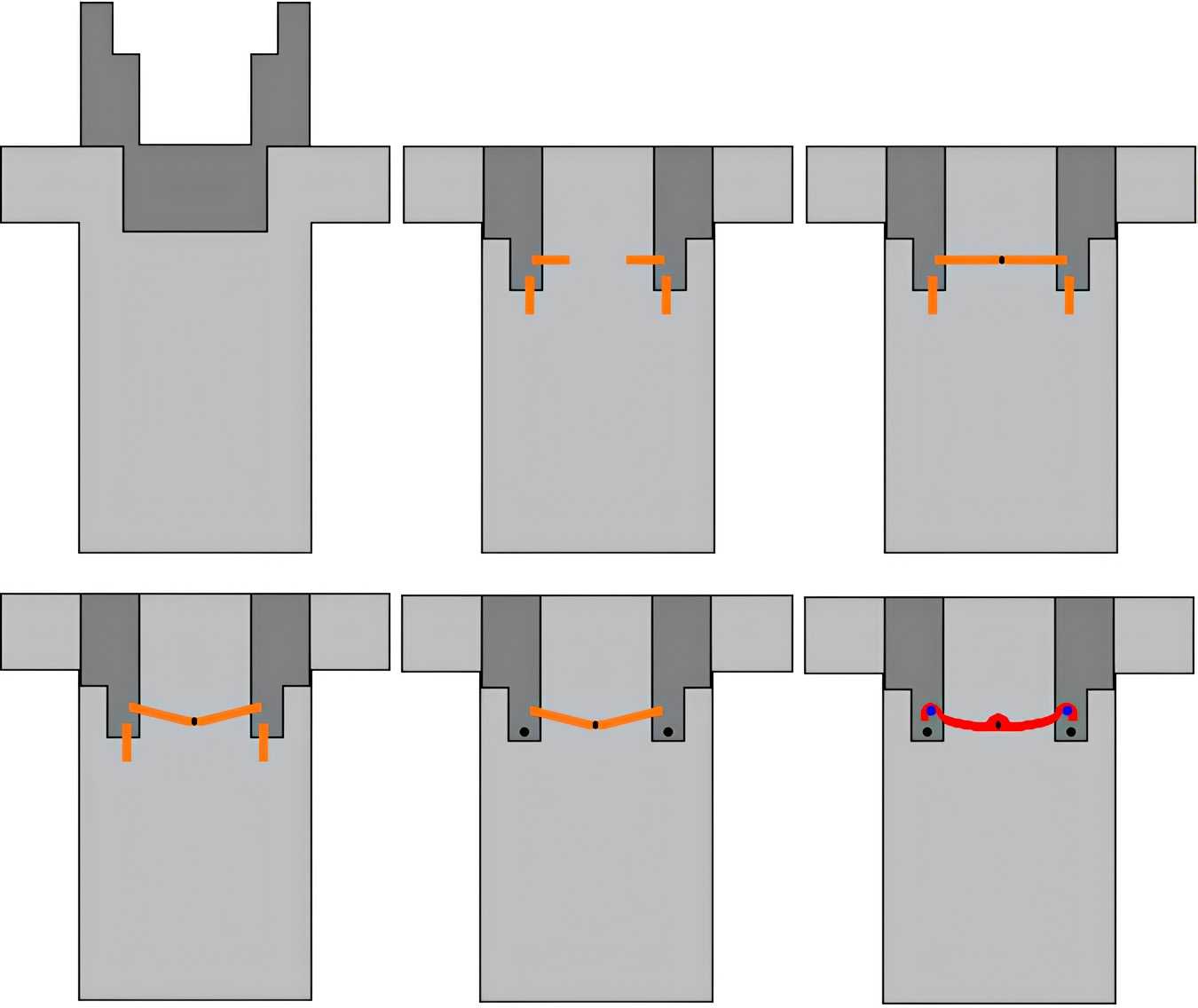
The development of a more secure way for fastening the lorica hamata went as follows:
- (1) An “open” neckline is seen in the first image. You slip it on top, then fold down the shoulder pads and secure them.
- Later designs are shown in the next two images where new attachments for the shoulder pads are seen (2). The two shoulder pads are secured with a leather strap. (3) A rivet in the middle of the chest keeps this strap in place.
The next three images depict the additional development over time.
- (4) Lower on the chest are the rivets for the retention strap.
- (5) Instead of using straps to fasten the neckline, now rivets are used.
- (6) The strap is finally replaced with a metal attachment. This piece is partially riveted to the chest. There is now a hook at the end of each shoulder arm. The hook for the arm is attached to a button.
Replacement of the Lorica Hamata
Lorica hamata remained almost unchanged in this form until the 5th century AD. It lost popularity in the 5th century and was supplanted by simpler and, most importantly, cheaper ring armor (unlike mail armor, the rings were not connected).
The ancient Roman blacksmiths increased the lorica hamata’s length under Julius Caesar. This armor started just above the hips, grew to nearly the knees, and then returned to its original size again.
The length of the sleeves also varied in size. The first versions did not have sleeves. But later, a few inches of short sleeves were introduced. After that point, sleeve lengths changed based on local trends and cultural preferences. For instance, the Roman legionaries in Syria started wearing lorica hamatas with long sleeves.
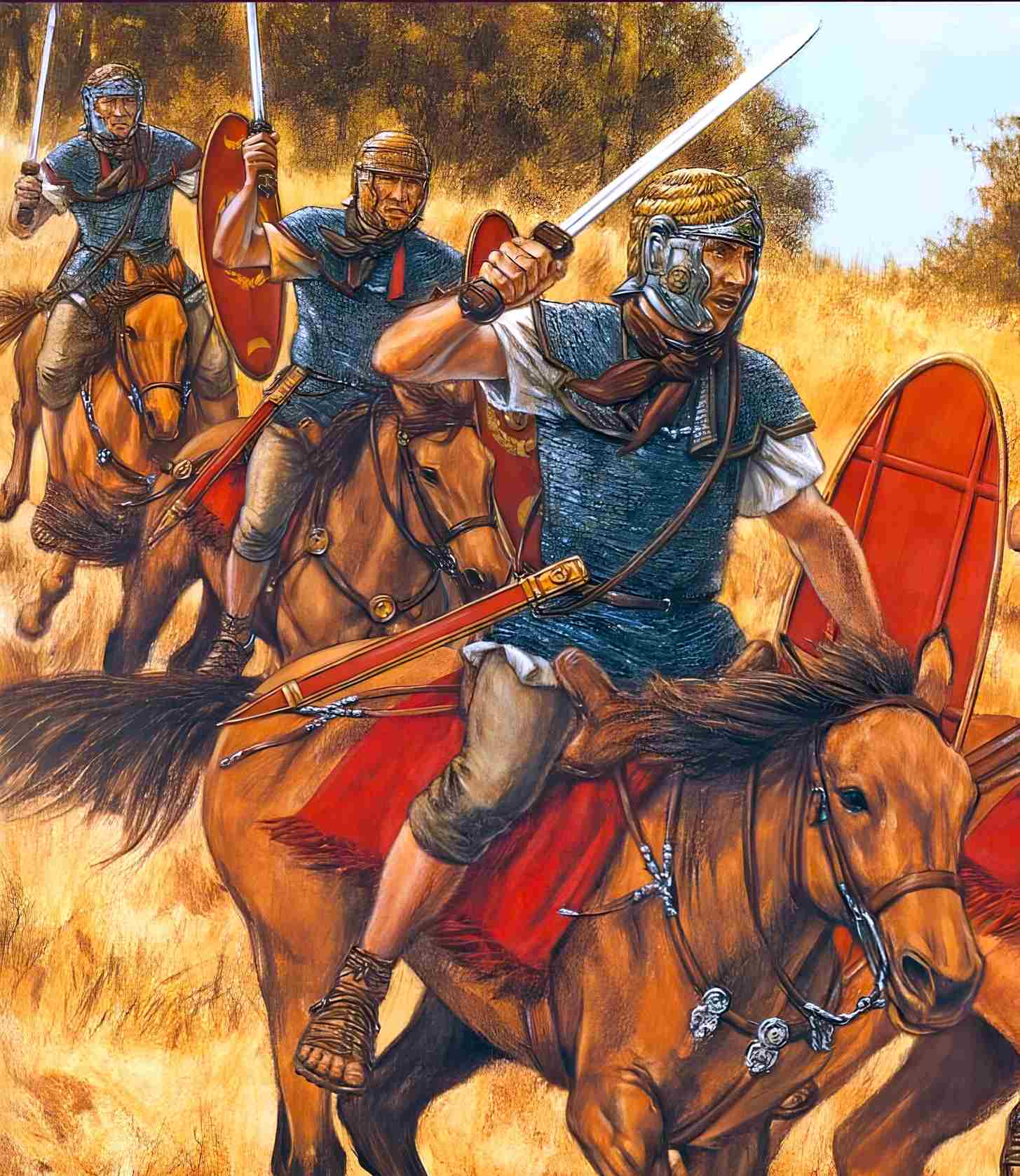
The practice of securing shoulder pads with metal attachments expanded widely by the late 1st century AD. The padding on the shoulder blades also seems to be missing. Around this period, some horse riders started using lorica segmentata shoulder pads instead of the traditional Greek neckline.
Nonetheless, the lorica hamata has been 1/4-type chainmail armor throughout its history (where 1 ring connects to 4 others).
Attachments to the Lorica Hamata

The lorica hamata attachments used by the legionnaires varied according to personal preference and the level of threat they faced.
Light tunics worn over chainmail were documented throughout the Roman Near East; thus, it’s safe to assume that surcoats were also used in these regions. While heavy tunics were occasionally worn in the winter, it is known that sutcoats were used in northern Gaul and on the Germanic borders.
Some mesh sleeves could be either permanently attached or easily removed which protected both the arms and legs. It was not uncommon to see the Greek greaves worn alongside the lorica hamata.

There are bas-reliefs depicting the use of metal plates to secure the front of the neckline. Also, a scarf (focale) was almost always worn with any Roman armor, including the lorica hamata. It was to protect the neck from the chafing of the armor. This was necessary since Roman armor usually had wide neck openings, which posed significant risks of injury.
Under the lorica hamata was a gambeson called the subarmalis or thoracomachus, which had been worn since Augustus’ time (r. 27 BC–14 AD). Optios and decurions (Roman cavalry officer) wore this gambeson as a mark of status, elaborately ornamented.
Manufacturing
The iron wire used to make the lorica hamata’s rings. This iron wire has been made by driving an iron ingot through a die with holes of progressively smaller sizes. This production method has been the case since at least the 8th century AD.
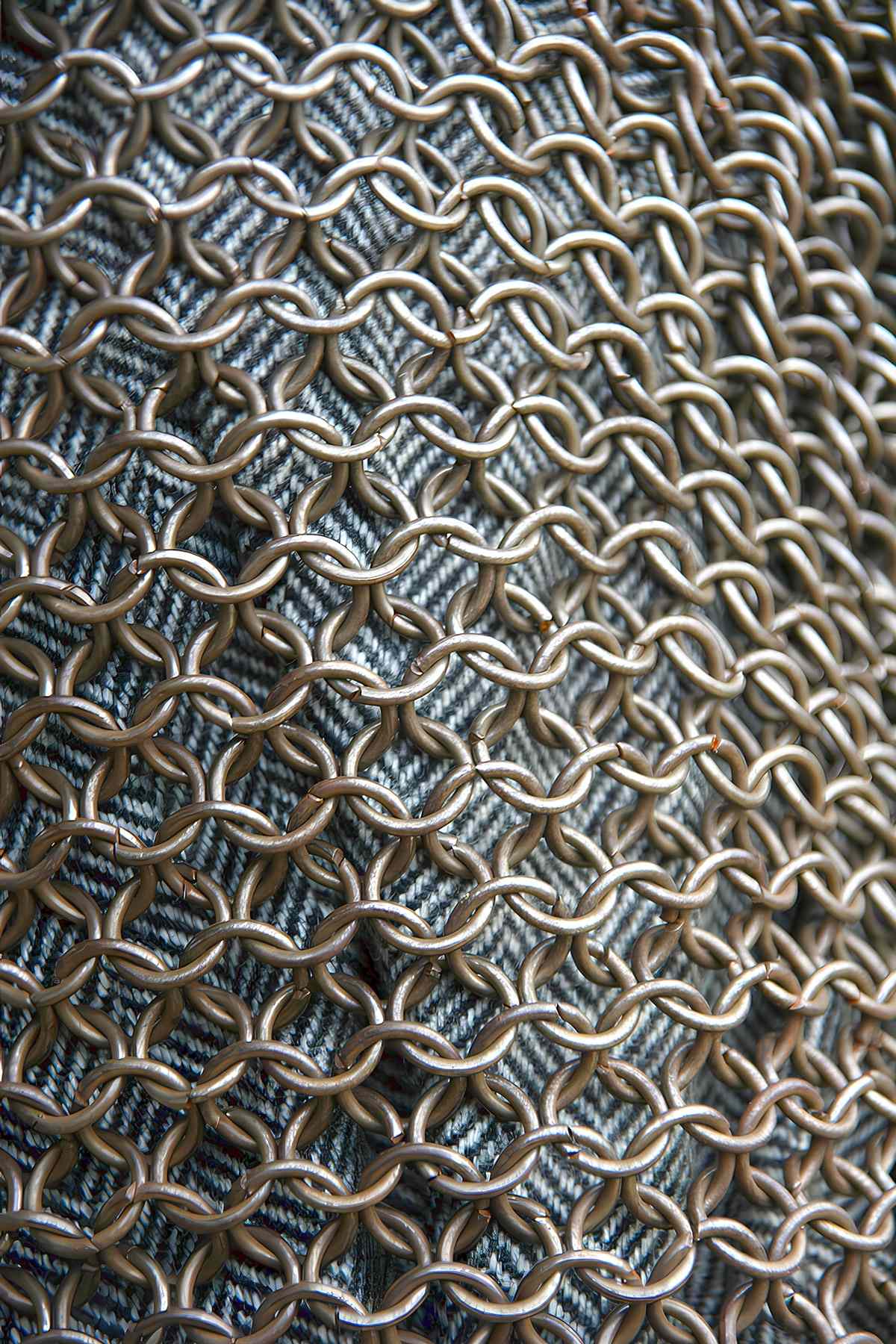
However, forging an ingot through a die with a single puncture directly generated the finished iron wire in Roman times. Using a single die was significantly more finicky since the wire would break as it was moved around. The iron wire was difficult and cost more coins than cheaper ring armor.
After Julius Caesar’s death, there was a power struggle between Mark Antony and Augustus, which led to the development of a new type of Roman armor called lorica segmentata. This new armor provides clues regarding the production time of the lorica hamata. According to historical accounts, a lorica segmentata required around 70 hours to produce with ready-use iron. This gives us roughly three times as much production time for lorica hamata since it is made of complex wire.

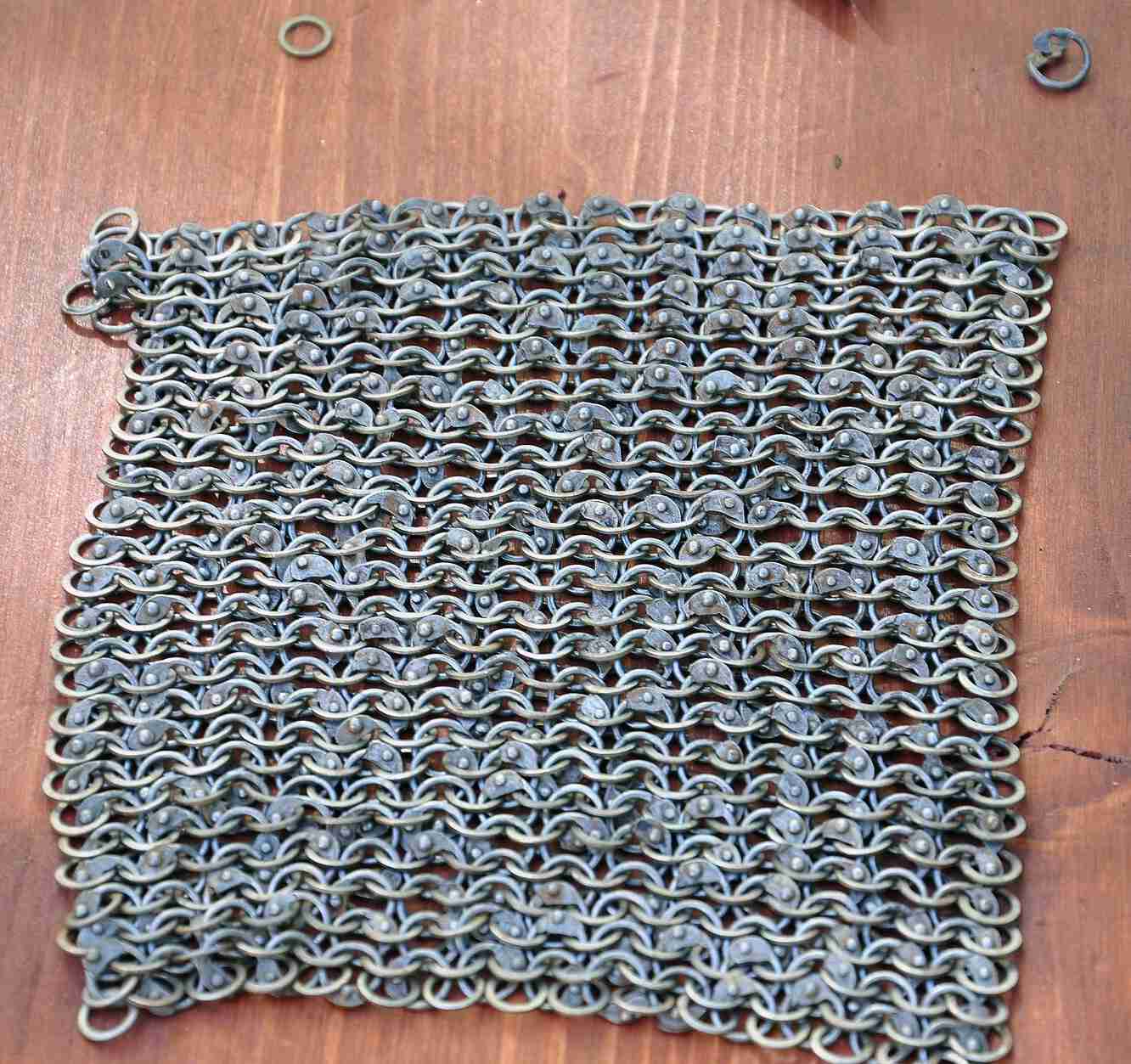
The most commonly used type of lorica hamata was the traditional 4:1 riveted variety. The spinnerets or spinning mills were a thing at the time, but the rings were often flattened and riveted, since this is what we learn from both historical sources and relics. Some of the examples, however, seem to be constructed of “open” ring armor (where rings are not connected).
Some lorica hamatas with 4:1 mesh were also made with a welded ring. In this variant, the 4 rings held together by the central ring were not riveted but welded. Only the central ring was riveted. This probably lowered the cost.
Decoration
The Roman legionaries had their armor and weapons adorned with elaborate designs. Even though this trend peaked with parade weapons, it also included battle equipment.
One or more rows of bronze rings have been seen lining the bottom of the lorica hamata on the remains of some pieces recovered in rivers around the world. This embellishment is reminiscent of what was seen on Indian parade chainmail from the late 19th and early 20th centuries.
The fibulas (brooch) were used to seal several lorica hamata on the chest, as was mentioned above. This fibula had two arms that met in S form. The entire structure had the shape of a U or twisted lyre, with two arms joined at their bases by an axis. It was common practice to adorn this flat surface. The whole fibula could be chiseled and gilded, and this was the status of rank among Roman legionaries.
The complexity and quantity of a person’s armaments in the Roman army served as one indicator of their wealth and status.
References
- Featured image: Photo by Frila, This file is licensed under the Attribution-Share Alike 3.0 Unported license.
- Chainmail armor repair. Gallery images: Roland zh, CC BY-SA 3.0


